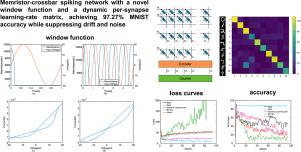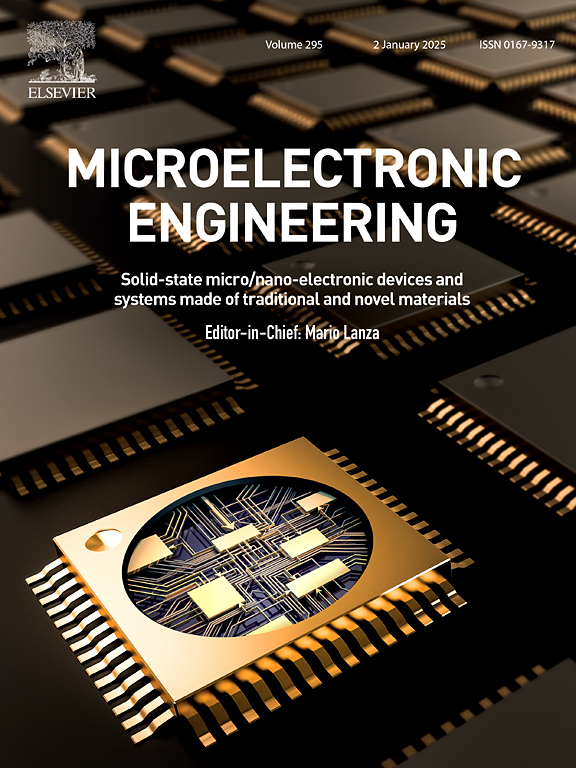Energy-efficient memristor-based spiking neural network for edge devices with a novel window function
IF 3.1
4区 工程技术
Q2 ENGINEERING, ELECTRICAL & ELECTRONIC
引用次数: 0
Abstract
The conventional artificial neural network is not suitable for the development trend of edge artificial intelligence due to its high computational energy requirements. In this study, we propose an energy-efficient system using spiking neural networks based on a memristor crossbar. A novel window function is introduced, which overcomes the shortcomings of conventional window functions. Additionally, a dynamic learning rate matrix approach is suggested to decrease the influence of conductance drift and conductance noise on neural networks, efficiently eliminate noise, and adjust the learning rate for each individual synapse. We evaluate the performance of the proposed method using an energy consumption evaluation model. Experimental results show that the proposed window function outperforms state-of-the-art window functions in terms of accuracy and test time. Furthermore, the dynamic learning rate matrix algorithm achieves 97.27% accuracy on the MNIST dataset. Memristor-based spiking neural networks have a significant energy consumption advantage over conventional artificial neural networks, making this approach suitable for resource-constrained edge artificial intelligence devices.

基于新型窗函数的边缘器件高效忆阻峰神经网络
传统的人工神经网络对计算能量的要求较高,不适合边缘人工智能的发展趋势。在这项研究中,我们提出了一个基于记忆电阻交叉棒的尖峰神经网络节能系统。提出了一种新的窗函数,克服了传统窗函数的缺点。此外,提出了一种动态学习率矩阵方法,以减少电导漂移和电导噪声对神经网络的影响,有效地消除噪声,并调整每个突触的学习率。我们使用能源消耗评估模型来评估所提出方法的性能。实验结果表明,所提出的窗函数在精度和测试时间上都优于现有的窗函数。此外,动态学习率矩阵算法在MNIST数据集上的准确率达到97.27%。与传统的人工神经网络相比,基于忆阻器的峰值神经网络具有显著的能耗优势,使得该方法适用于资源受限的边缘人工智能设备。
本文章由计算机程序翻译,如有差异,请以英文原文为准。
求助全文
约1分钟内获得全文
求助全文
来源期刊

Microelectronic Engineering
工程技术-工程:电子与电气
CiteScore
5.30
自引率
4.30%
发文量
131
审稿时长
29 days
期刊介绍:
Microelectronic Engineering is the premier nanoprocessing, and nanotechnology journal focusing on fabrication of electronic, photonic, bioelectronic, electromechanic and fluidic devices and systems, and their applications in the broad areas of electronics, photonics, energy, life sciences, and environment. It covers also the expanding interdisciplinary field of "more than Moore" and "beyond Moore" integrated nanoelectronics / photonics and micro-/nano-/bio-systems. Through its unique mixture of peer-reviewed articles, reviews, accelerated publications, short and Technical notes, and the latest research news on key developments, Microelectronic Engineering provides comprehensive coverage of this exciting, interdisciplinary and dynamic new field for researchers in academia and professionals in industry.
 求助内容:
求助内容: 应助结果提醒方式:
应助结果提醒方式:


